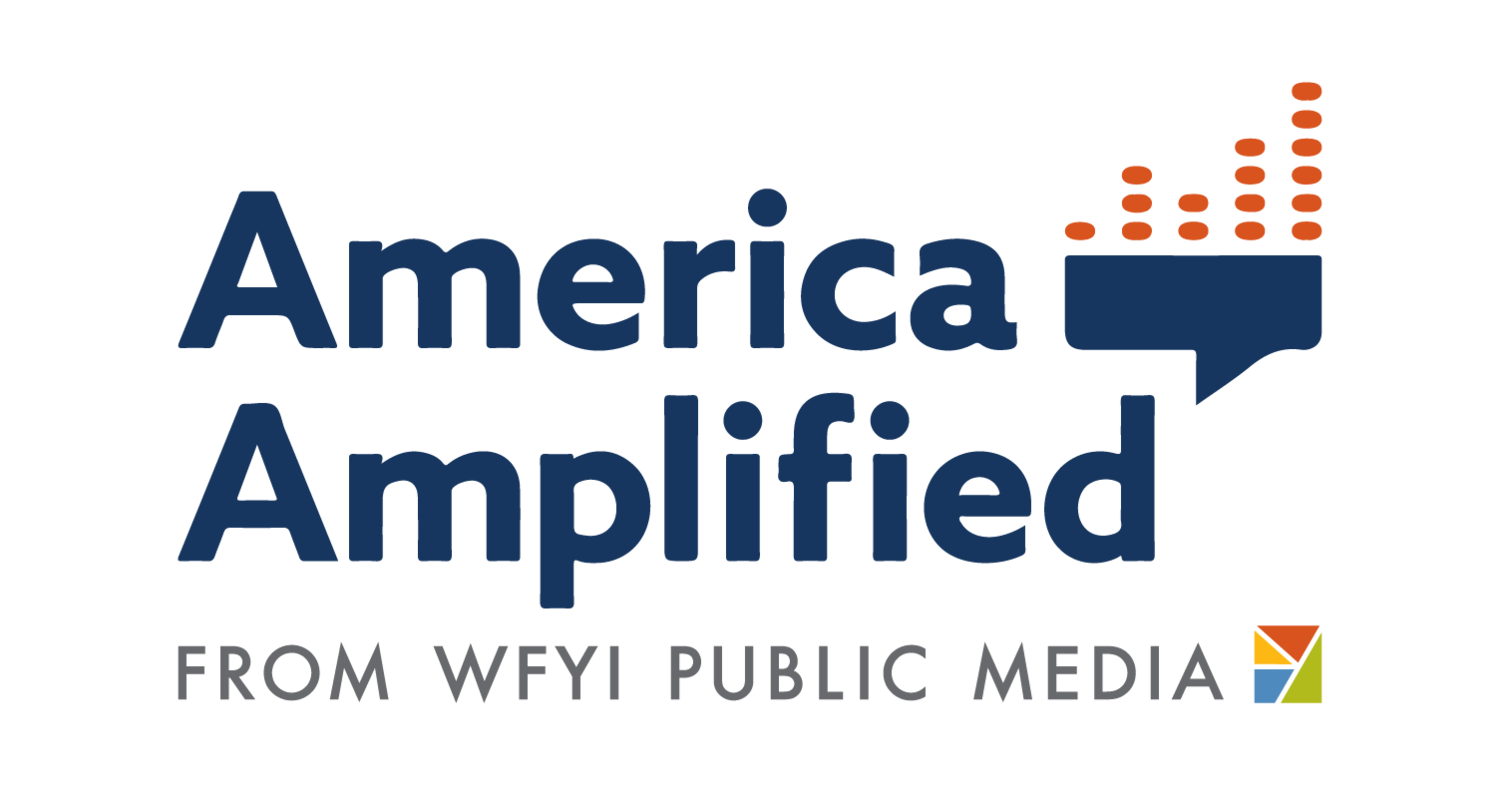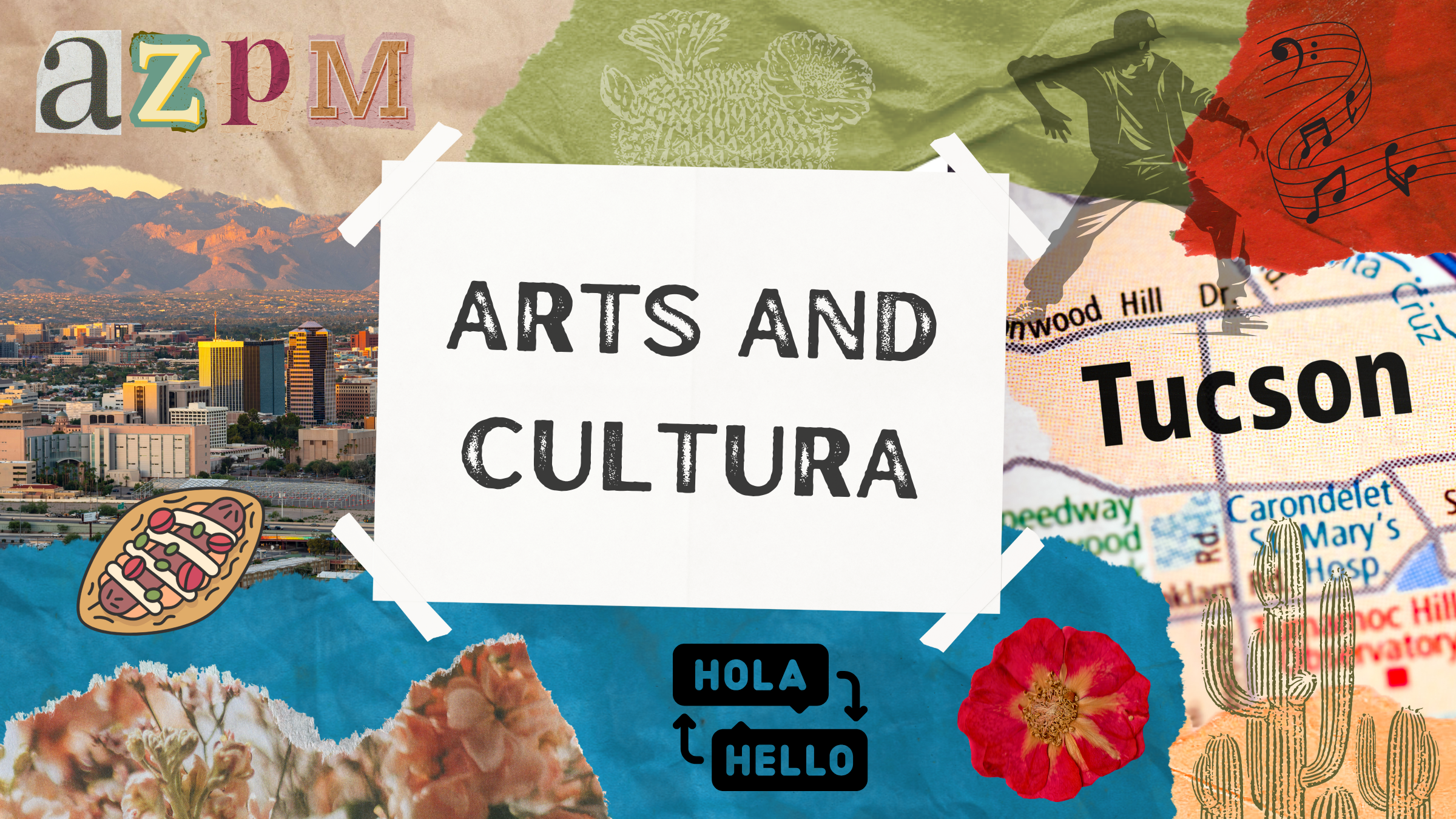Tucson’s AZPM used arts and cultura to supercharge their election engagement
Photo: Collage by Kateleigh Drumm / America Amplified
A bilingual event informed by local traditions led to a highly engaged session that helped this Arizona station change perceptions and shape their next steps.
When AZPM analyzed its news coverage, it realized something was missing. “We were lacking in Indigenous representation as well as Latino representation,” said Paola Rodriguez, a reporter and producer advocating for engagement journalism within the station.
Identifying as a Latina herself, Rodriguez was eager to engage with her community and others needing valuable information during this critical election year.
Along with Senior Reporter Zachary Ziegler, Executive Producer Andrew Brown, and News Director Christopher Conover, Rodriguez encouraged AZPM to research where to find these two communities and where to meet with them in person – to listen. They found specific zip codes within Tucson city limits that were part of Pasqua Yaqui lands and also included a predominantly Latino population. The Pasqua Yaqui are a federally recognized tribe descended from the Yaqui people, whose original homelands included southern Arizona.
The two communities overlapped in a patchwork of zip codes in southern Tucson.
One specific place caught the eye of the station: Pueblo High School, on the south side of Tucson, seemed like the perfect spot to meet with the Pascua Yaqui tribe and people with Latin American origins.
The Objective
“We were looking at how we reach into these communities and rebuild the bridges we once had, which are now lost,” said Rodriguez. She wanted to show these communities that they were seen and heard. “We see their culture and want to amplify that more,” she said.
AZPM decided to organize an event they called “Democracy 101,” aimed at combating election misinformation while amplifying and empowering community members to find their own ways to become more civically engaged.
The Challenge
“As with any newsroom, you have reporters dedicated to certain beats. They create trust at an individual level with the people they're interacting with, but it's not necessarily trust [for]the institution, [the station],” said Rodriguez. “Once a reporter leaves for another opportunity elsewhere, those relationships also leave.” Building that trust individually over and over again was not efficient. AZPM wanted to be the station to be the source of trust.
“We should have reporters who are dedicated [to beats] and build trust within these communities,” Rodriguez said, “But also, the institution of AZPM should build this trust because we're community service, so we should have community trust in the system,” she added.
Another challenge the team encountered came from inside the newsroom. “You would think that the hardest part was getting buy-in from community members because normally, you would think: Oh, they're also hesitant,” said Rodriguez. “I think maybe the biggest hurdle we were tackling was how we convinced newsroom leadership that this was something we needed to do,” she added.
The Solution
For Rodriguez, a traditional town hall for elections would not be compelling enough to attract these two communities. The Pascua Yaqui elections for tribal leadership in June were highly contested, and ultimately, one race was decided by the flip of a coin. In addition, this year, a record number of Latinos were eligible to vote. Those factors convinced Rodriguez and others at the station that much more was needed to engage these communities.
The AZPM team ultimately decided on a three-panel bilingual event seasoned with a mix of culture and arts to attract the Pascua Yaqui and Latino communities and to show that AZPM genuinely cared about them.
Cultural elements were used from the beginning of the planning for the event. AZPM wanted the invitation to be memorable and “frameable.” On one side, they included the details of the event and the panelists; on the other, they included an illustration by local artist Yisela Molina of Galeria Mitotera.
AZPM’s “Democracy 101” invite and illustration by local artist Yisela Molina (Screenshot)
During the event, participants watched documentaries and listened to a group of panelists discuss elections and civic engagement. Participants also enjoyed the music of Cash Lansky, a local hip hop artist and performer who founded A Hand Up, Not A Hand-Out, a nonprofit organization serving African American communities, and one of the event's panelists.
The event took place one week before the presidential elections and included three panels on basic civic issues such as “understanding elections and how votes are counted”; “why your vote matters,” and another on “civic engagement outside of elections.”
The goal of this last panel was to show the attendees that although change happens through elections, communities can also create change through civic engagement and culture. “We were looking at people that would be really good examples of what it's like to be civically engaged,” said Rodriguez. In addition to Cash Lansky, panelists included Katharine Len Yee Mitchell, production manager of Borderlands Theater, a company that develops plays inspired by community feedback, Mel Dominguez and Melissa Brown-Dominguez, co-owners of a local art gallery, Galeria Mitotera; and Laura Lopez, Thrive Project Supervisor for the City of Tucson. Other panelists included Oscar Flores, the Pascua Yaqui Attorney General.
Food was important as well! Attendees were served Sonoran hot dogs –a popular hot dog in Tucson that is wrapped in bacon and grilled, served on a bolillo-style bun, and topped with onions, tomatoes, pinto beans, and condiments such as mayonnaise, mustard, and jalapeño salsa.
Some attendees expressed skepticism at the beginning, openly sharing that they assumed a media organization hosting an election event might be there to spread misinformation. Ultimately, the blend of arts and culture helped change their perspective.
Rodriguez said the attendees’ response after the event was overwhelmingly positive. Attendees praised the initiative, emphasizing that it was nothing like what they had feared. Many expressed a desire to see more of this type of programming and even asked how they could get involved — whether by sharing their own stories or contributing to building a stronger community.
The Takeaways
How to build trust. Be honest. “When I talk to people, I tell them, Hey, I know my job is to know everything. But the reality is, I'm one person, and I can't be everywhere. But I really care, and I really want to be where you're at. I would love to have coffee with you, even just to talk. I don't have to record it. I just want to get to know you and your community. This is more than just work for me. This is my community, too.”
How to reach out to new audiences. Be creative. Think of all the ways you can advertise your event. To get to those communities is more than just sending a message to your members. “Send it out in a newsletter is great, but the people who are our members, the people who signed up for our newsletters, are not the community we are trying to reach,” said Rodriguez. Contact influencers, community activists, local coffee shops, and libraries to spread the word. “It’s like making friends. You meet a friend, you think of another friend. If you want to reach into these communities, there's no point in just being like, Oh, I'm here. I'm a news organization. You should just inherently trust me. That's just not how it goes”.
How to get results. Be patient. “It takes a long time. Our event wasn't sold out by any means. But I think it was a learning moment for us at AZPM. We were able to take the lessons, make some changes, keep some things, and rethink how we go about community engagement in the future.” It’s not a sprint. It’s a marathon. Train yourself for it.
How to convince newsroom leadership. Be patient again. The positive feedback and responses from the community were like a magic wand for AZPM's editorial staff. They recognized the enormous impact that an event like Democracy 101 could have on the community and the station. And they realized how it can help reporters do their job better. However, just one event may not be enough to change newsroom culture. Sometimes, it takes a number of initiatives to convince editorial staff to invest in engagement journalism. You have to be patient and insist, just like dripping water eventually pierces a stone.




